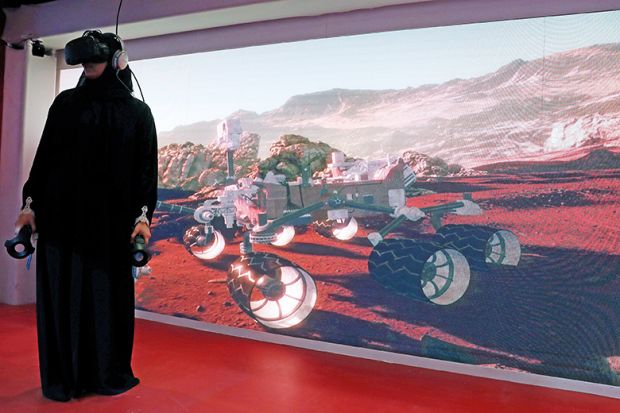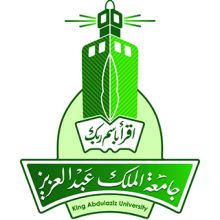Despite the growing trend for women to outpace men when it comes to university enrolment worldwide, the persistent problem of relatively few female students in some science subjects is never far from the debate.
But one exception to this that is being increasingly noticed is the tendency for the share of female students in science, technology, engineering and mathematics to be much higher in some Middle Eastern countries.
It is a pattern discernible from analysing Times Higher Education’s own figures on student numbers, gathered as part of the data collection for the World University Rankings. Plotting the share of female students enrolled at ranked institutions in some major countries such as the UK, the US and China alongside those in the Gulf – against the background of the wealth of each nation – highlights the difference.
In engineering, for example, Oman, Bahrain, the United Arab Emirates and Qatar are all much closer to parity in their student cohorts than many Western nations, including countries thought of as being more progressive on gender equality such as Sweden. The UK lags at the bottom of the group, with just 18 per cent of students being women (although it is noticeable that Saudi Arabia is also low).
Another subject area that has a poor reputation in the West for appealing to women – computer science – produces similar results. Here, the rich European and North American countries cluster together at about 20 per cent female enrolment, while, in many Gulf nations, women make up the lion’s share of the total, including in Saudi Arabia.
This intriguing characteristic of higher education in the Gulf region has not gone unnoticed by academics studying gender balance in STEM subjects.
In one recent paper, psychologists David Geary, from the University of Missouri, and Gijsbert Stoet, from Leeds Beckett University, found that there seemed to be an inverse relationship in some countries between general gender equality and the proportion of women gaining STEM degrees.
The research suggested that one factor in this might be that liberal societies allowed girls to express personal preferences for subjects and that more of them chose to study non-STEM fields. Meanwhile, in countries where gender equality was generally lower, there was sometimes more emphasis on pursuing subjects considered to have more utility in terms of employment.
They are findings that appear to be backed up by those with knowledge of education in the Middle East.
Allison Church, Middle East regional director for Kiron Open Higher Education, an organisation trying to help refugees access courses online, said that women and girls in the region “have far fewer choices for careers” and noted that what are seen as “respectable” pathways “are limited to being housewives, doctors, teachers or scientists”.
“Having a system that encourages and supports certain career paths that are considered appropriate means that parents, teachers and even the job market determine what is studied and what career options a woman has,” she said.
One irony of women’s high participation rate in STEM courses in the Gulf nations is that their study paths do not necessarily appear to lead to postgraduate study or employment.
It is a conundrum pinpointed in a paper published recently in the World Journal of Education by Samira Islam, head of the drug monitoring unit at the King Fahd Medical Research Center in Saudi Arabia and a trailblazer for Saudi women in higher education.
In the paper, Professor Islam also highlights STEM enrolment figures in the region. “However, when these women graduate and attempt to either pursue careers in STEM fields or postgraduate degrees such as the MSc or the PhD, they are often excluded on the basis of their gender,” she points out.
This seems to be borne out by statistics in the paper from the United Nations Educational, Scientific, and Cultural Organisation that show the proportion of university teachers across all disciplines who are women.
Among the countries featured, only Tunisia and Lebanon are very close to having half of lecturers being female. In some of the Gulf nations where women make up a large proportion of those studying STEM, the share of female lecturers is closer to a third.
The share of women in the broader workforce in the countries is even lower: in the UAE and Oman, just 13 per cent of workers are female, according to Unesco statistics quoted in the study.
Professor Islam says that “removing the barriers that hinder women from working would release the enormous potential of educated Arab women, and foster major social and economic benefits for every Arab state”.
“Several Arab countries assert eagerness in building knowledge-based societies but [more] often than not, women are not supported by strong legislation on equal opportunity for women, to assist them in successfully entering the workforce, to be productive and to achieve long-term economic prospects in the STEM fields,” she writes.
Nevertheless, there are signs that change could be on the horizon, with even the most conservative Arab states such as Saudi Arabia pledging to modernise.
Christopher Davidson, reader in Middle East politics at Durham University, said he thought that the large cohorts of women in STEM subjects were in themselves a positive sign of social change in gender politics.
“In my view, it is a function of young women seeing scientific education as one of the few ways in which to break out of the old, very conservative societal mould for women in the region,” he said.
But Dr Davidson also drew attention to the fact that currently there was little “follow-through” in terms of jobs, “with the majority of women trained in STEM subjects mostly unable to find relevant employment opportunities”. He did suggest, however, that the growth of the private sector in the region could lead to improvements in the situation.
In her paper, Professor Islam says that the approaches of large multinational companies operating in the area could be vital, and she suggests that they establish “state-of-the-art research centres and facilities within the region to become accessible to scientists for advance training within their countries”.
However, she accepts that for real change to take root, there would still need to be a much wider shift in the perception of women’s role in Arab societies.
“In principle, there are equal opportunities for both genders in many Arab states. However, one of the greatest impediments that prevent women from joining the workforce is flanked by culture, religion and industry needs along with the absence of solid and practiced anti-discrimination policies,” she writes.
“Social perception and prejudice determine which types of employment are particularly suitable for women or men.”
Find out more about THE DataPoints
THE DataPoints is designed with the forward-looking and growth-minded institution in view
POSTSCRIPT:
Print headline: Women in STEM: why the Gulf outshines the West
Register to continue
Why register?
- Registration is free and only takes a moment
- Once registered, you can read 3 articles a month
- Sign up for our newsletter
Subscribe
Or subscribe for unlimited access to:
- Unlimited access to news, views, insights & reviews
- Digital editions
- Digital access to THE’s university and college rankings analysis
Already registered or a current subscriber? Login








